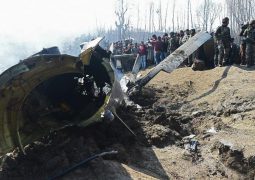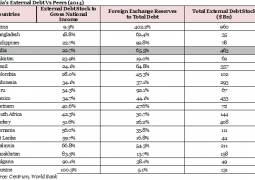Looming water crisis of the Globe: India is one of the most worst terms: India’s environmental crisis
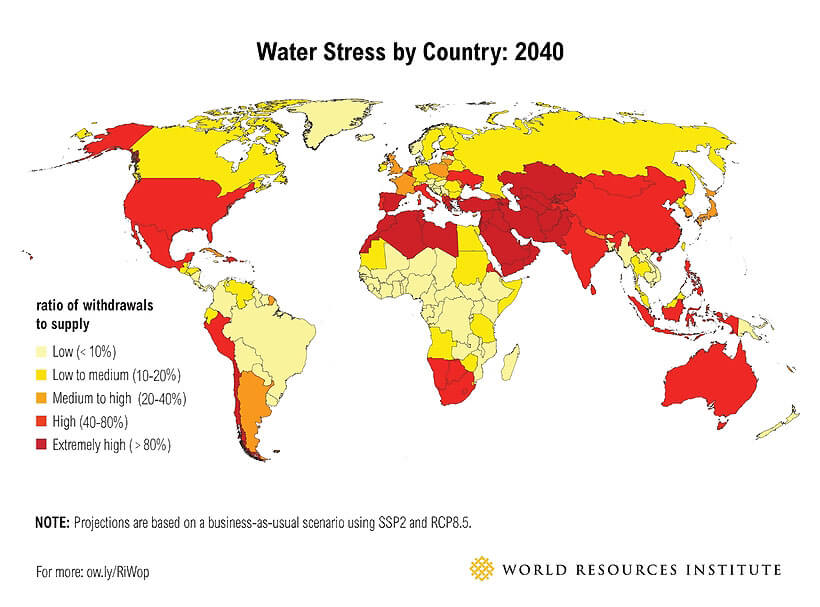
Water every 10 days: The families on the front line of India’s environmental crisis
By Helen Regan and Omar Khan, CNN
Updated 0740 GMT (1540 HKT) May 16, 2019
India is facing the worst water crisis in its history, with 600 million people dealing with high to extreme water shortage. Many people need to rely on tankers to deliver their water.
New Delhi (CNN)Hundreds of empty plastic jugs wait in rows on the cracked, dry, dusty earth. Hovering expectantly nearby, the residents of Vasant Kunj slum in South Delhi, one of the city’s largest and poorest, stand waiting for a government water tanker to arrive.
It’s been 10 days.
Ten days since they last received a drop of water. For many families, their containers ran out days ago. They are thirsty and dirty.
“It’s very difficult to live like this,” said Fatima Bibi, 30, who is in charge of organizing water for the slum. “Everything comes from this water. Everything. Drinking, cooking, cleaning, washing.”
Ten minutes away are Delhi’s upscale shopping malls, where you can buy a pair of sneakers for $1,000. But in this part of the city, people live in tightly packed corrugated-iron huts. In the 40 C (104 F) heat, it feels like a furnace inside them.
As the tanker rolls into the compound, shouts rise up from the crowd. Men and women sprint forward with green rubber pipes to feed the tanker’s water into their containers.
They are given 600 liters (158.5 gallons) per household — barely enough to survive on until the next rations arrive.
India is facing the worst water crisis in its history, with 600 million people dealing with high to extreme water shortages, a recent report by Niti Aayog, a policy think tank for the Indian government. An average of 200,000 Indian lives are lost every year due to inadequate supply or contamination of water.
Twenty-one major Indian cities are estimated to run out of groundwater by 2020 — just a year away. As India develops and grows to support its 1.3 billion people, those on the front lines of the crisis say it’s only going to get worse.
“We have too many people for too little water,” said Jyoti Sharma, founder and president of FORCE, an Indian NGO working on water conservation and sanitation. “It’s unfortunate that people don’t see how frightening it really is.”
As arid countries like India get drier due to climate change, Sharma warned that water could soon become a global disparity issue.
The problem
Simply put, India’s water sources are running out.
India’s main problem is that the country relies on groundwater for most of its water needs. Decades of digging bore holes — pipes that are drilled into the earth to reach water — in favor of traditional water harvesting systems has meant India is suffering from severe ground water depletion.
“We are the largest groundwater user in the world,” said Joydeep Gupta, South Asia editor at the Third Pole, a news website dedicated to environmental issues. “It’s very bad, it’s a state of very grave crisis.”
As India becomes more urbanized and millions more people move to cities, there’s an increased demand for water. Cities must look further and further afield for water sources, which are pumped hundreds of kilometers through pipes.
As many as 600 million people are living in areas of high to extreme water stress.
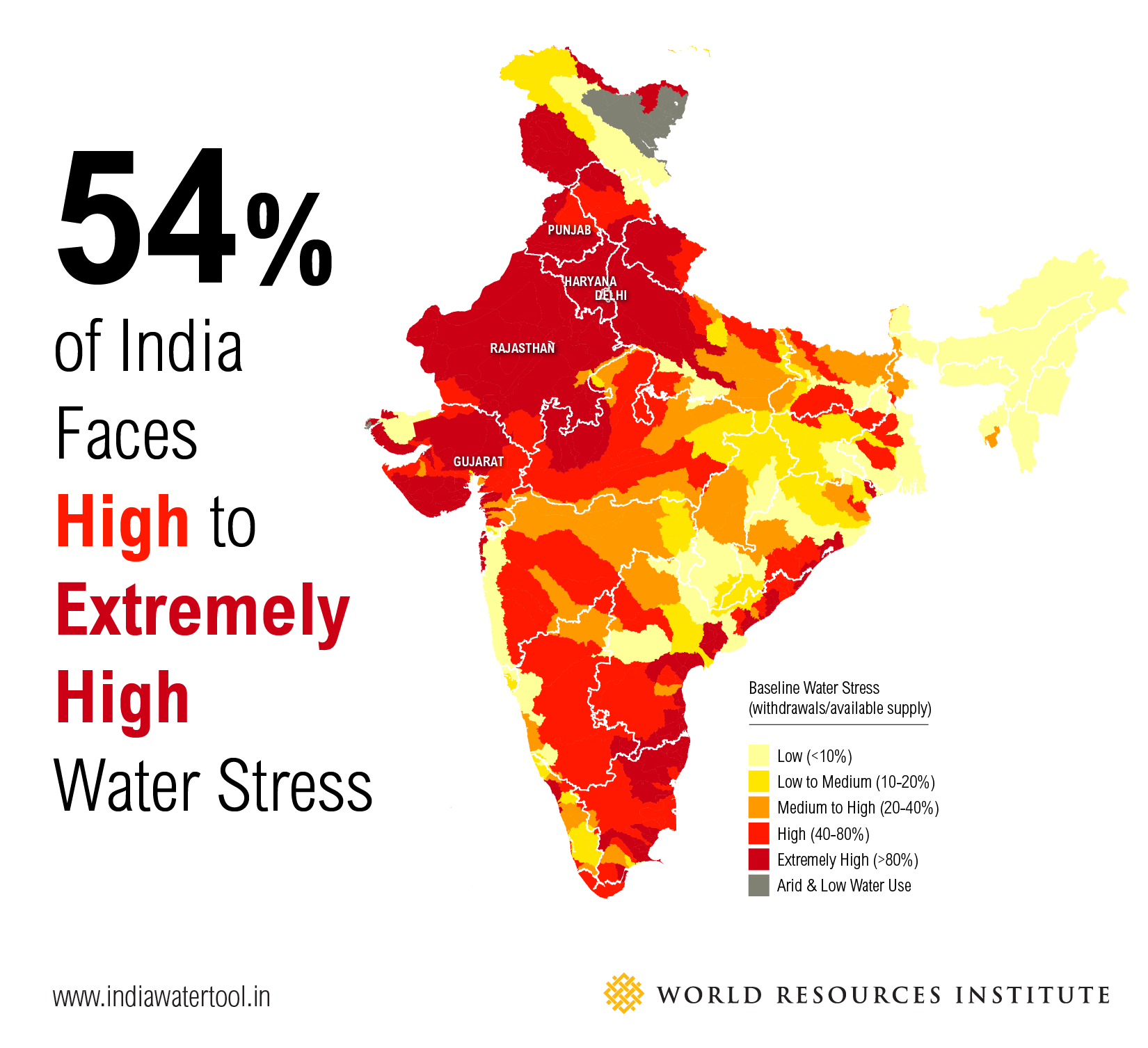
One hundred million people, including those in the large cities of Delhi, Bangalore and Hyderabad, will soon be living in zero groundwater cities, according to the report.
Added to this is that India is predominantly an agricultural country, with 80% of its water used to irrigate thirsty crops such as sugarcane and rice.
“Policies like several states giving free electricity to farmers or giving financial support for groundwater extraction — borewells and tube wells — results in uncontrolled exploitation and wastage of resource,” Suresh Rohilla, director of urban water management at the Centre for Science and Environment.
Compounding the problem is changing climate patterns, which have made water supply far more uncertain. Monsoon rains have been more erratic and droughts more common, threatening farmer’s harvests, Gupta said. Shorter winters and longer, hotter summers are increasing glacial melt in the Himalayas, which feeds into India’s northern rivers.
It’s a crisis that is playing out all over the country.
Depleting water tables, drought and mounting debt have caused a deepening agrarian crisis, and suicide among farmers has become a national issue. More than 200,000 have farmers killed themselves since 1995, government data collated by Mumbai-based NGO Down to Earth.
Last year, Shimla, in the northern Indian state of Himachal Pradesh, nearly ran out of water, spurring furious scenes of people scrambling for water, long queues and protests demanding water and urging tourists not to visit.
Families must stretch out their allotted water for 10 days. The supply often doesn’t last.

In major cities such as Bangalore and Hyderabad — two big IT and tech hubs — water tanker mafias are ruling who gets water and for what price as the cities are completely reliant on tanks for water. “There is a huge tanker mafia problem,” said Gupta. “But it’s the only way they get water.”
Rural areas fare worse. When bore wells run dry, villagers are left without any source of water and are forced to walk miles or pay exorbitant prices for water to be delivered.
India’s waterways have also turned toxic as billions of liters of wastewater — including chemical run off and raw sewage — is pumped into them every day.
“It’s not unending. You cannot do this forever,” Sharma said. “We are reaching the end game.”
Coping strategies
Water in India is now a precious commodity, and the people of Vasant Kunj slum are going to extraordinary lengths to conserve as much as possible.
Each household is allocated 600 liters (158.5 gallons) of free water by the New Delhi water board — in summer and winter — but residents say it’s not enough to last the 10 days until the tanker delivers again.
Residents wait hours for the tanker to arrive.
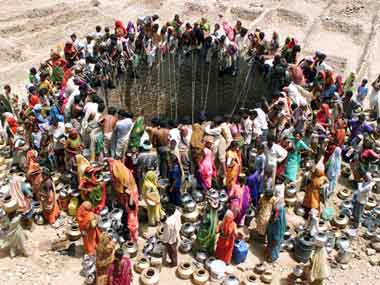
Water dictates life here. Men and women out working are called back to the slum if a tanker is scheduled to arrive. There is no real set time for its arrival, though, and Fatima Bibi said recently the tanker came at 1 a.m.
“It’s a whole day thing. They just have to wait to get the water,” she said.
Her neighbor Ashraf Ullah is happy the tanker water has arrived. “It’s cold water so the kids will love it,” he said. “After 10 days in the plastic container, the water is boiling.”
The lack of water is surprisingly a very visible presence in the slum.
Residents of Vasant Kunj slum try to stretch water as much as possible by reusing dirty water to wash cooking utensils.
Piles of black and blue water containers, each with separate markings for different families, are stacked up outside the huts, making the tiny lanes even narrower.
“We take half a bucket of water to bathe everyday, and some days we can’t even have a wash,” said Fatima Bibi. “Water is used to wash the vegetables. We’ll then use it to wash clothes.”
The water is used and reused and reused again. Even dirty water can be used again to clean elsewhere.
There are no taps or pipes. No drains. No sanitation. Buckets of slop sit outside every house — not a scrap of water is wasted here.
Water containers line every lane and take up every available space in the slum.
Despite their efforts, the water doesn’t last. Neighbors share with neighbors if there is enough to go round.
“Water causes huge problems here,” said Malika Bibi, a resident of Vasant Kunj, who says arguments break out within families if the water dries up before the tanker comes. “Husband says why are you using so much water (to wash)?” she said.
Fatima Bibi lives in a one-roomed hut with her husband and four children. There is one bed and a tiny cooking area.
She came to New Delhi 20 years ago from West Bengal with her husband — she was married off at the age of about 10.
Now, at age 30, she has four children and is in charge of the slum’s water distribution. Though she is uneducated, she has become a strong and important voice in her community.
Fatima Bibi persuaded her neighbors to pool their money to invest in a water tank to catch the runoff from rainwater.
Fatima Bibi has even built a water tank in the ground next to her house to collect rainwater. She pooled money from her neighbors, and they hope to install a motor so they can pump the drain water out to use for washing or cleaning.
It’s a rudimentary but ingenious solution to their problem.
“I want to do more with my community and water,” she said. “Our kids should have a better life than we do.”
Change
As global warming gets worse, conflict and commodification of water between the haves and the have-nots could play out on the world stage.
“In terms of international relations water will become a determining factor,” FORCE’s Sharmer said.
She envisions a future where countries with enough water and other resources — predominantly richer countries in the Northern Hemisphere — could hold access to water over drier, poorer countries in Africa and Asia.
“If I’m taking my food from you, I don’t see myself standing up and fighting with you if you did something that’s not quite right. We moved out of a kind of imperialism, and I’m wondering whether water will push us into another kind of imperialism,” she said.
Other countries in similar straits as India, where people are living with water scarcity, include neighboring Pakistan, Ethiopia, and in the US state of California.
The tanker water often runs out before all the containers are full.
While the outlook is bleak, there is hope.
There are some signs that farmers, adverse to using more efficient but expensive drip irrigation techniques, are slowly changing due to government initiatives.
But those initiatives are slow to implement and are not rolling out countrywide.
At the local level, New Delhi has water conservation schemes in houses with penalties and rewards for conserving water. Sharmer said the Delhi government is now buying up bodies of water in a bid to build self-sustaining water systems.
The state water board didn’t reply to requests for comment.
It’s a slow road, but Sharma is optimistic.
“There’s a lot of talk, and then only 20% starts to happen. But that 20% happens, and that momentum starts to get built up, and slowly it’s a movement that starts to happen,” she said.
And there are encouraging signs from the private sector, particularly from start-ups using innovation to improve water efficiency and wastewater management. While small scale and scattered, these private sector solutions could help if they are able to roll out large scale.
One such start up is Retas, set up by a trio of graduate students in 2016 to improve management systems of rain and stormwater by using rainwater harvesting.
Startups like Retas could play a big part in helping India solve its water scarcity problems.
While the method — which artificially recharges the groundwater levels — has been used throughout India’s history, it has fallen out of favor in recent times.
“With rapid urbanization, infrastructure development and lack of planned cities, we have lost our focus on conserving water,” said Ankit Magan, director of Retas and self-styled “waterpreneur.”
“Modern times requires modern techniques.”
The company works with various industries, infrastructure companies, public institutions and governments and operates in seven Indian states, though Magan said they plan to go nationwide.
“Unfortunately, India has not witnessed any significant investments either from private or government sources in this sector,” he said, adding that it’s time for investors to get involved in water conservation.
“There has to be a more collaborative approach towards solving this problem,” he said. “We all should strive to give back to Mother Earth what we are extracting from her.
- Previous View from Japan: Trump spoils Xi’s Belt and Road Forum, without even attending
- Next Trump worsens Europe’s Huawei dilemma




